★★★
“Warm, rather than hot.”
 McCarthy appears to be Feig’s muse, having starred in his last four movies, from Bridesmaids through this, and then on to Spy and the Ghostbusters reboot. The results here, also fall somewhere in the middle: while decently amusing, this mis-matched cop comedy falls short of the unexpected glory which was Spy. Straight-laced FBI agent Sarah Ashburn (Bullock) is great at her job, but disliked by her peers for her officious attitude. In order to try and win a promotion, she accepts a case in Boston to locate an elusive and unknown drug lord, Simon Larkin. There, she immediately encounters and antagonizes a local cop, Shannon Mullins (McCarthy); Mullins is also a good law-enforcement agent, but the polar opposite of Ashburn, being loud- and foul-mouthed, and no respecter of authority. Inevitably, the two have to work together, and eventually develop respect and affection for each other, etc. as they solve the case. You know the drill.
McCarthy appears to be Feig’s muse, having starred in his last four movies, from Bridesmaids through this, and then on to Spy and the Ghostbusters reboot. The results here, also fall somewhere in the middle: while decently amusing, this mis-matched cop comedy falls short of the unexpected glory which was Spy. Straight-laced FBI agent Sarah Ashburn (Bullock) is great at her job, but disliked by her peers for her officious attitude. In order to try and win a promotion, she accepts a case in Boston to locate an elusive and unknown drug lord, Simon Larkin. There, she immediately encounters and antagonizes a local cop, Shannon Mullins (McCarthy); Mullins is also a good law-enforcement agent, but the polar opposite of Ashburn, being loud- and foul-mouthed, and no respecter of authority. Inevitably, the two have to work together, and eventually develop respect and affection for each other, etc. as they solve the case. You know the drill.
The story here is incredibly hackneyed, and making the protagonists a pair of women is about the laziest twist imaginable by writer Katie Dippold. Mind you, she co-wrote the Ghostbusters reboot as well, so part of me wonders if her elevator pitches all consist of “(insert film name), but with women!” [Though for the record, she was not involved with the upcoming Ocean’s Eight] What salvages the film are the lead actresses, with both Bullock and McCarthy in equally fine form. The latter has that hyper-acidic persona down to a T, from the moment we first see Mullins, and she tells her boss, “I’ll be there sharply at go-fuck-yourself o’clock, if there’s no traffic.” Ashburn is at the other extreme, prissily tightly-wound, yet so inept personally, she has to kidnap a neighbour’s cat for affection since hers ran off. They’re a perfect match: Mullins doesn’t give a damn, because Ashburn gives them all.
It is at these two extremes when the movie is at its most entertaining, and that’s in the early going. As the film progresses, both of the characters drift towards the middle from the edges. They generally become less interesting as a result, though there’s still amusement to be had from Ashburn’s spectacularly incompetent attempts to be a bit sweary. There’s also a gloriously gory sequence, as she attempts to carry out a tracheotomy, having seen one on television. However, not all of the comedy works, and there’s absolutely no reason why this needs a running time of more than two hours. For example, the scene where they fight each other to go through a door first, goes on about three times as long as is either necessary or funny, and the scenes involving Mullins’s dysfunctional family left me entirely cold. They’d have been better off abandoning all efforts at the drug lord plot, and just given us 90 minutes of the central pair, at the Odd Couple counterpoints of their characters, and the resulting, delightful bickering.
Dir: Paul Feig
Star: Sandra Bullock, Melissa McCarthy, Demián Bichir, Marlon Wayans





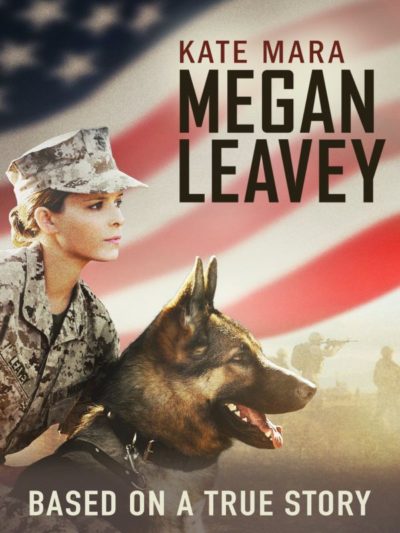 The crossing of war and animal genres of film isn’t one with much precedent, and you can see why: it would be difficult to balance those disparate elements. While this does a laudable effort, and manages to avoid sliding too far into the slippery road of sentimentality, it offers few surprises, even if you don’t know the true story on which it’s based.
The crossing of war and animal genres of film isn’t one with much precedent, and you can see why: it would be difficult to balance those disparate elements. While this does a laudable effort, and manages to avoid sliding too far into the slippery road of sentimentality, it offers few surprises, even if you don’t know the true story on which it’s based. It would, certainly, be easy to look at the poverty-row production values here, and dismiss this contemptuously as a bad film. I mean, the very first shot supposedly sets the scene at the infamous New England house in 1892, where Lizzie Borden took an axe and gave her mother forty whacks. But
It would, certainly, be easy to look at the poverty-row production values here, and dismiss this contemptuously as a bad film. I mean, the very first shot supposedly sets the scene at the infamous New England house in 1892, where Lizzie Borden took an axe and gave her mother forty whacks. But 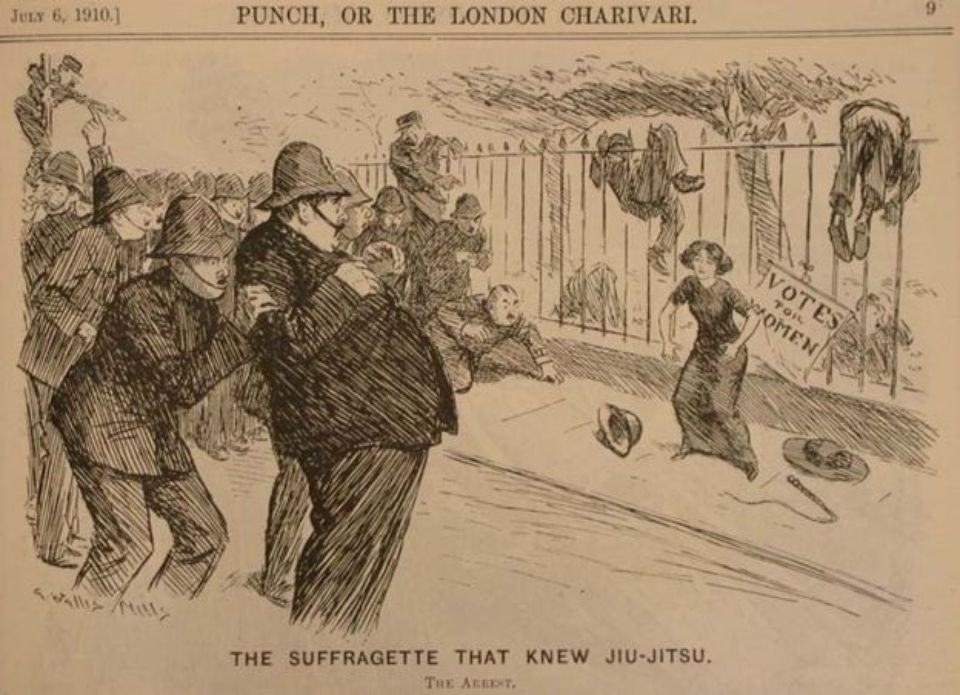
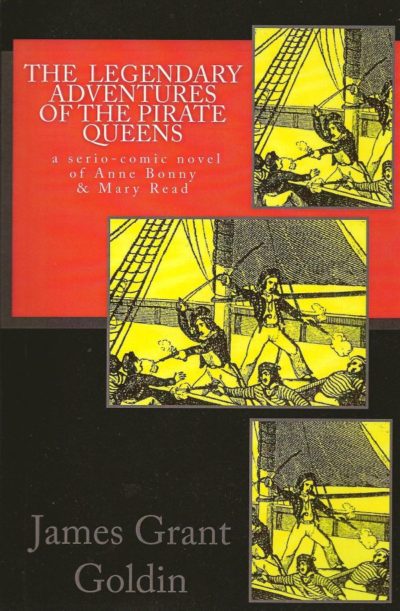 “Two women with swords was a sight that none of Vane’s men had ever imagined. It was like seeing a two-headed snake; one such monster would be a freak of nature, while two would indicate a terrible new species.”
“Two women with swords was a sight that none of Vane’s men had ever imagined. It was like seeing a two-headed snake; one such monster would be a freak of nature, while two would indicate a terrible new species.” This feels like a low-budget project in many ways, but manages to punch above its weight, in part due to an impressive supporting cast. While Lou Diamond Phillips, Danny Trejo and Steven Bauer are nowhere near as important as their names on the cover might suggest, their presence provide a solid foundation on which the less well-known members of the cast can build. In particular, Danay García as Loca; having bailed on Fear the Walking Dead after about two episodes, I wasn’t aware of her, but on the basis of this, she’s a name on whom we’ll be keeping an eye.
This feels like a low-budget project in many ways, but manages to punch above its weight, in part due to an impressive supporting cast. While Lou Diamond Phillips, Danny Trejo and Steven Bauer are nowhere near as important as their names on the cover might suggest, their presence provide a solid foundation on which the less well-known members of the cast can build. In particular, Danay García as Loca; having bailed on Fear the Walking Dead after about two episodes, I wasn’t aware of her, but on the basis of this, she’s a name on whom we’ll be keeping an eye.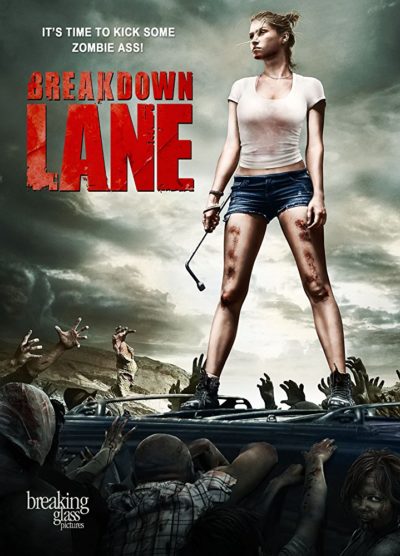 An initial twist on the zombie apocalypse and an appealing heroine aren’t enough to save this. By the end, while said heroine has transformed into a mayhem-dealing machine, any fresh elements have been discarded, for a low-budget rehash of ones which we’ve seen far too often already. It starts intriguingly, with Kirby Lane (Moore) “ambushed” by a woman in a camper with a sick man at a gas station, while on the way to meet her boyfriend (Cushing). When her car breaks down in the middle of absolutely nowhere, the only connection to the outside world is Max (Howell), the agent for her on-board emergency help provider. But things in the outside world are deteriorating rapidly, and the tow-truck Max dispatches… well, let’s just say, it might be a while. Meanwhile, Kirby has to handle the perils which threaten her, including humans both infected and cannibalistic, as she tries to fulfill her promise to link up with Max.
An initial twist on the zombie apocalypse and an appealing heroine aren’t enough to save this. By the end, while said heroine has transformed into a mayhem-dealing machine, any fresh elements have been discarded, for a low-budget rehash of ones which we’ve seen far too often already. It starts intriguingly, with Kirby Lane (Moore) “ambushed” by a woman in a camper with a sick man at a gas station, while on the way to meet her boyfriend (Cushing). When her car breaks down in the middle of absolutely nowhere, the only connection to the outside world is Max (Howell), the agent for her on-board emergency help provider. But things in the outside world are deteriorating rapidly, and the tow-truck Max dispatches… well, let’s just say, it might be a while. Meanwhile, Kirby has to handle the perils which threaten her, including humans both infected and cannibalistic, as she tries to fulfill her promise to link up with Max. Oh, be afraid… Be
Oh, be afraid… Be  This slice of British televisual fantasy was offered up on Christmas Day, and provides a pleasant, warm and unchallenging slice of family fare. It takes place in a world where magic has ruled, but is gradually fading from consciousness and being replaced by technology. The magic appears connected to the dragons with which humanity shared the planet, uneasily. After previous battles, a kind of apartheid was set up, with the world divided into dragon and human areas. Overseeing the peace is the Dragonslayer, who is charged with killing any dragons who violate the treaty and attack humans or their territory. But some members of mankind are casting envious eyes on the unspoiled territory of the dragons, and would love an excuse to take it over.
This slice of British televisual fantasy was offered up on Christmas Day, and provides a pleasant, warm and unchallenging slice of family fare. It takes place in a world where magic has ruled, but is gradually fading from consciousness and being replaced by technology. The magic appears connected to the dragons with which humanity shared the planet, uneasily. After previous battles, a kind of apartheid was set up, with the world divided into dragon and human areas. Overseeing the peace is the Dragonslayer, who is charged with killing any dragons who violate the treaty and attack humans or their territory. But some members of mankind are casting envious eyes on the unspoiled territory of the dragons, and would love an excuse to take it over.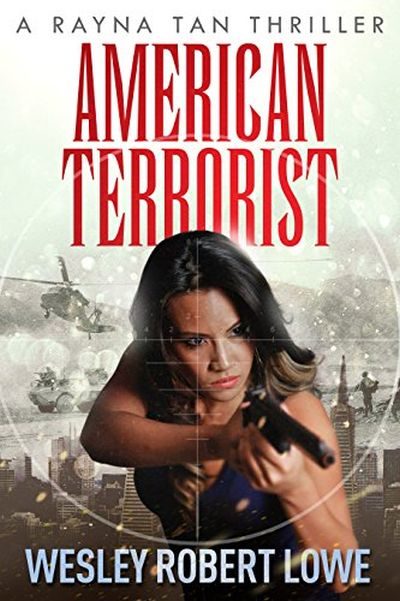 This was a disappointment, and a real chore to get through. If it had been a film, I’d have been reduced to surfing Facebook distractedly on my phone for the majority of its running time. Unfortunately, you don’t get to leave a book on in the background. It’s a stylistic and literary mess, throwing at the reader Canadian Special Forces heroine Rayna Tan, without providing any real background or character building beyond an incident in the Middle East. It then randomly switches around between her, a brother/sister pair of Islamic terrorists, Ahmed and Fatima, and their startlingly incompetent American recruits, who appeared to have strayed in from Four Lions. Throw in some unsubtle politicizing – even if I don’t necessarily disagree with the ideas expressed, it’s not what I want to read in my fiction – and it feels more like a half-finished collection of ideas than a coherent novel.
This was a disappointment, and a real chore to get through. If it had been a film, I’d have been reduced to surfing Facebook distractedly on my phone for the majority of its running time. Unfortunately, you don’t get to leave a book on in the background. It’s a stylistic and literary mess, throwing at the reader Canadian Special Forces heroine Rayna Tan, without providing any real background or character building beyond an incident in the Middle East. It then randomly switches around between her, a brother/sister pair of Islamic terrorists, Ahmed and Fatima, and their startlingly incompetent American recruits, who appeared to have strayed in from Four Lions. Throw in some unsubtle politicizing – even if I don’t necessarily disagree with the ideas expressed, it’s not what I want to read in my fiction – and it feels more like a half-finished collection of ideas than a coherent novel.